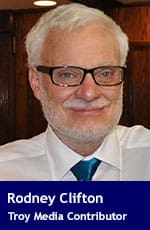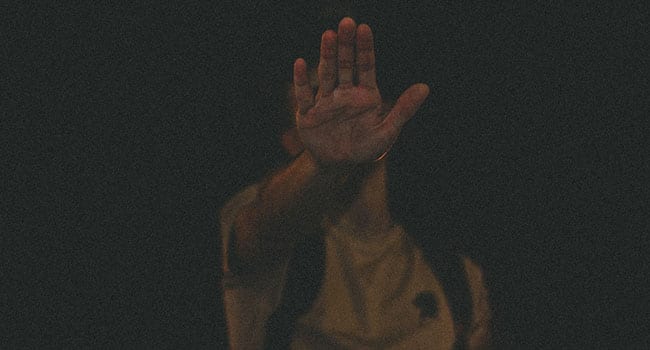 Ten years ago, Douglas Bland, a retired lieutenant-colonel from the Canadian Forces and the chair of Defence Studies at Queen’s University, published Uprising: A Novel.
Ten years ago, Douglas Bland, a retired lieutenant-colonel from the Canadian Forces and the chair of Defence Studies at Queen’s University, published Uprising: A Novel.
In this 500-page work of fiction, Bland outlines how militant Indigenous warriors and their allies could, in the tradition of Louis Riel, hold Canada up for ransom, stopping rail traffic, blocking highways, disrupting government offices, and even bombing hydro towers north of Winnipeg.
Like Riel, these protesters won’t succeed in the long run. But in the short run they could cause considerable damage to the Canadian economy, making many hard-working citizens distressed because they truly want to help Indigenous people take their rightful place in this country.
Without due care, these radicals would easily alienate liberal Canadians, without realizing that they are their natural allies.
Of course, their fictional radical cause is doomed to failure, but it would take a few weeks and a lot of wasted resources and considerable anguish for this to happen. The perceived racism against this small group of Indigenous and non-Indigenous people, however, will last forever.
Bland’s book is a strategic plan for how Indigenous warriors can destroy the goose that lays the golden egg.
Now life has imitated art, with roadblocks popping up across the country in support of the Wet’suwet’en, as the band’s hereditary leaders protest a B.C. pipeline project.
These warriors and their allies seem to have forgotten that all Canadians, including themselves and their relatives, rely on a functioning economy for food, electricity, heat, water and transportation.
The warning signs for this crisis have been evident for many years. But, most citizens – and all our leaders – have misinterpreted the signs.
In 2007, for example, Phil Fontaine, then national chief of the Assembly of First Nations, told a CTV reporter: “We have a right to be frustrated, concerned, angry – anger that’s building and building.”
The same year, Manitoba’s Terrance Nelson, chief of the Roseau River First Nation, told CTV: “There are only two ways of dealing with the white man. Either you pick up a gun or you stand between him and his money.”
So far, the Indigenous warriors are only standing between Canadians and their livelihood. Fortunately, they haven’t yet resorted to guns.
Over the last 25 years, there has been recognition of the need for change, ultimately resulting in the delivery of the Truth and Reconciliation Commission report in 2015.
Embedded in this 3,500-page report are demands that Canada, the provinces, churches and businesses accept the UN Declaration on the Rights of Indigenous Peoples. In fact, 16 calls to action mention this declaration as a necessary step for reconciliation.
The B.C. legislature has accepted this declaration in legislation. It will pay a high price for this foolish decision and so will other Canadians.
This declaration gives Indigenous people power over many economic, environmental and developmental projects in B.C. More problematic, the declaration implies that the B.C. government must renounce some of its sovereignty because the United Nations will become the court of last appeal, especially in disputes with Indigenous people.
The clearest statement of the Truth and Reconciliation call to action buried in the report:
“What is clear to this Commission is that Aboriginal peoples and the Crown have very different conflicting views on what reconciliation is and how it is best achieved. The Government of Canada appears to believe that reconciliation entails Aboriginal peoples’ accepting the reality and validity of Crown sovereignty and parliamentary supremacy in order to allow the government to get on with business. Aboriginal people, on the other hand, see reconciliation as an opportunity to affirm their own sovereignty and return to the ‘partnership’ ambitions they held after Confederation.
“Canadian governments and their law departments have a responsibility to discontinue acting as though they are in an adversarial relationship with Aboriginal people and to start acting as true fiduciaries. … There, we conclude that Aboriginal claims of title and rights should be accepted on assertion, with the burden of proof placed on those who object to such claims.”
Clearly these two short paragraphs mean that Canadian governments must agree with Indigenous claims even when they’re unfair to other Canadians. If governments disagree with Indigenous interpretations of B.C.’s laws and policies, the government won’t be acting as fiduciary stewards of Indigenous rights.
This requirement for reconciliation clearly discounts the responsibilities that democratic governments have in balancing the complex overlapping, and often competing interests of various citizens. In a democracy, laws and policies are always contested, and politicians need to balance various interests.
Most Canadians probably think reconciliation means showing mutual respect, and providing equal opportunities to people regardless of their cultural background, thereby eventually coming to an agreement.
But the Truth and Reconciliation Commission report rejects this notion by sustaining the validity of Indigenous peoples’ interpretation of what reconciliation really means. In fact, the report implies that reconciliation can’t be achieved unless all Indigenous people agree. If one person disagrees, reconciliation has not been achieved.
Of course, cynics are wondering when the young warriors will pick up guns, like Riel, and make the Oka crisis look like a sandbox spat between two six-year-olds. Too bad municipal, provincial and federal governments aren’t tuned into the cynics’ concerns.
Rodney Clifton is a senior fellow at the Frontier Centre for Public Policy and a professor emeritus at the University of Manitoba.
Rodney is a Troy Media Thought Leader. Why aren’t you?
The views, opinions and positions expressed by columnists and contributors are the author’s alone. They do not inherently or expressly reflect the views, opinions and/or positions of our publication.


